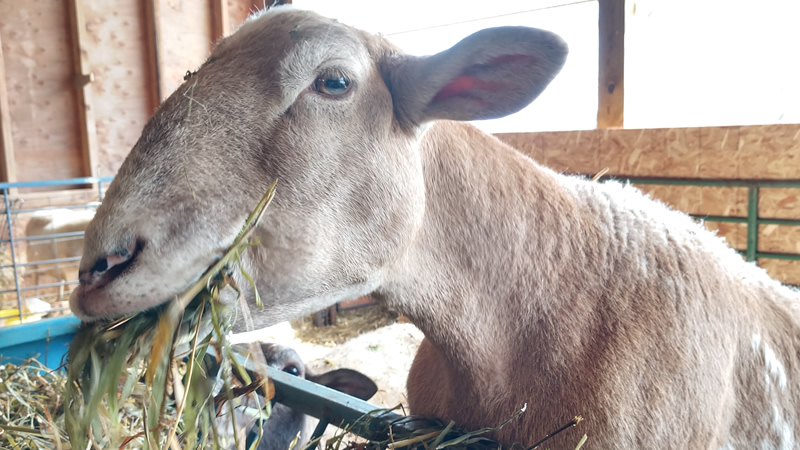That’s right. Just about 147 days is all it takes for the gestation of lambs. So fast it’s a miracle of sorts. I often feel like there’s so much to do, but so little time (Check out: Gestation Table). With Lambing season always in the back of our mind, we begin the process in late summer and fall determining which ewes should be bred to which ram. It’s not simple for us. We weigh a lot of decisions. Which rams bring the greatest parasite resistance to the mating? Which ewes need a little improvement in their hind legs or pasterns? Which ram’s Estimated Breeding Values dovetail best with which ewes? These are all things that we consider when planning our matings. And you can take our word for it, every mating is planned.
By the time gestation is 4 months along, our ewes are snug in their barns for the winter and we evaluate their body condition (Check out: Body Condition Scoring) to determine how much supplemental nutrition is needed as we move towards the final days of gestation when lambs can grow roughly 80% of their birth weight in just the last 4 to 6 weeks of gestation. Our conventionally fed ewes are offered whole grains or a prepared ration. We typically start them at ½ lb per head per day about 6 weeks out if they are in good condition (body condition of 3 or more) increasing that to 1 lb per head per day in the last week or two before lambing. When we breed ewes lambs, at roughly 9 months of age, we keep a close eye on their condition as they are still growing plus carrying a lamb or two. Supplementing them is a bit more tricky. Starting much earlier and doing a regular evaluation of condition helps to avoid them getting too thin. We typically keep bred ewe lambs separate, often with an older ewe that is not quite in the condition we’d like to see, so they can be fed a bit more than the mature brood ewes.
As the calendar gets closer to the start of lambing season, we vaccinate all pregnant ewes with their annual booster for Clostridial diseases (tetanus, overeating, etc.). A simple subcutaneous injection is all it takes. Vaccinating pregnant ewes roughly 4 weeks before the start of lambing season (i.e., when the average lambing date among all the ewes is 4 weeks away), provides immunity to her lambs through her colostrum.
Within a few days of first lambs, we reconfigure our pens. We establish a series of jugs (mother/lamb bonding pens) fully equipped with individual hay feeders, water buckets and fresh bedding. One year, as I was just finishing putting the last jug together, I noticed a ewe going into labor. Phew! Just in time!

